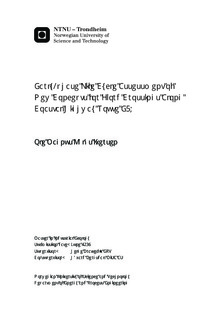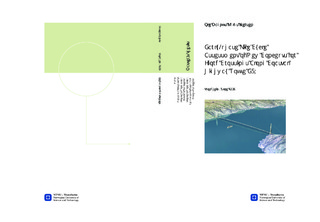| dc.description.abstract | The goal of this thesis was to analyze the potential indirect environmental impacts, mainly greenhouse gas (GHG) emissions associated with the construction of novel fjord crossings along Coastal Highway Route E39 in Norway. This was done by conducting an early-phase Life Cycle Assessment (LCA) of the concepts claimed technically feasible for crossing the Sognefjord. The contribution of GHG-emissions from fjord crossing infrastructure compared to traffic related emissions was investigated in detail. The GHG-emissions related to the Sognefjord crossing were applied in a fictional fjord crossing scenario to calculate potential payback periods for the infrastructure investment. In addition, a simplified analysis was conducted based on the two (previous) route choice alternatives of Hafast and Fefast along route E39. The literature review showed that there are significant differences between the GHG-emissions associated with road infrastructure. For bridges, the material production phase is identified as the main source of emissions. The construction, operation and maintenance related activities are of less importance. However in most studies the construction phase seems to be roughly estimated, or based on a scarce amount of data. When traffic is included, it is the main contributor to GHG-emissions per kilometer of road in a life cycle perspective. The GHG-emissions associated with of each of the three Sognefjord crossing concepts were calculated to be around 100 times higher than traditional road infrastructure per kilometer. Life cycle phases considered were material production, construction, operation and maintenance over 100 years. The Submerged Floating Tunnel (SFT) was found to have the highest total emissions, with about 605 900 tonnes of CO2-equivalents. The Suspension Bridge (SB) had emissions of 493 200 tonnes, and the Floating Bridge (FB) approximately 380 800 tonnes of CO2-eq in the conducted analysis. The material production phase was responsible for more than 94 % of the emissions in all three cases. The production of concrete, construction and reinforcement steel was the major contributor in this phase. On a per kilometer basis the SFT emitted approximately 148 400 tonnes, the SB 133 300 tonnes, and the FB 86 500 tonnes of CO2-eq. Comparing the three fjord crossing concepts by their effective roadway area used directly for vehicle operation offers another picture. The SB is the highest emitting structure per m2 of effective roadway area, with about 1 160 kg of CO2-eq. The SFT and FB had emissions of respectively 1 060 and 910 kg of CO2-eq per m2. The SFT had the highest total energy consumption and the highest impact in the majority of the other environmental impacts considered in the analysis. In a 40 year time horizon, traffic related emissions were responsible for less than 21 % of the total GHG-emissions when included for the Sognefjord crossing concepts. This result differs from the literature, where the traffic related emissions mostly are the dominant source compared to the infrastructure.Several of the calculations from the fictive fjord crossing scenario indicated GHG-emission payback periods of more than 100 years for technologically advanced fjord crossings. This occurred when the AADT was lower than 2000 or the replaced road shorter than 8 km. A future reduction of CO2-emissions from fuel combustion due to improved vehicle technology was also associated with payback periods longer than 100 years. The GHG-emissions related to the Hafast and Fefast route alternatives were almost equal in a 40 year time perspective. This was due to the Fefast alternative including more emission intensive infrastructure than the 13 km longer Hafast route.The results from the LCA conducted in this thesis gave considerably higher GHG-emissions related to road infrastructure than previous studies. This was mainly due to the high material consumption of the fjord crossing concepts. The emissions associated with the infrastructure were still significant even when traffic related emissions were included in different scenarios. If Norway is to reach its emission reduction targets, road infrastructure related GHG-emissions of this scale should be taken into account when planning road corridors and designing fjord crossing concepts. | nb_NO |

